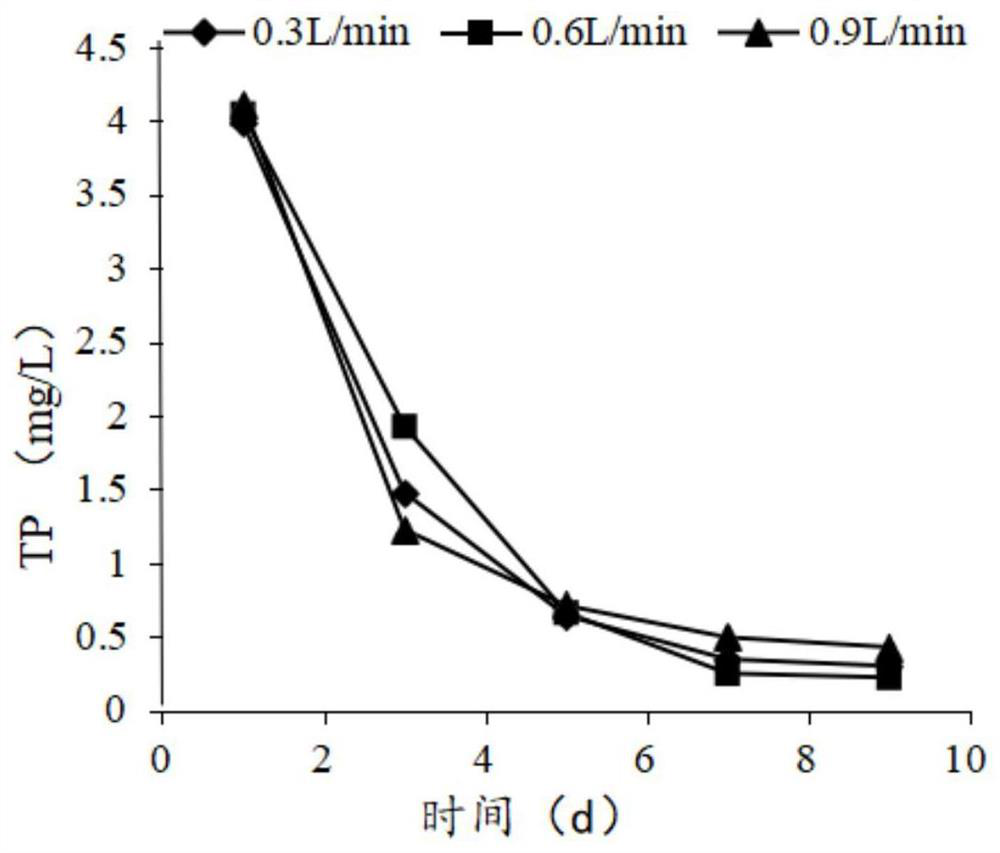Method for treating rural domestic sewage by using chlorella pyrenoidosa
A technology of Chlorella pyrenoidosa and domestic sewage, applied in chemical instruments and methods, biological water/sewage treatment, water/sludge/sewage treatment, etc., can solve problems such as poor removal of pollutants and reduce pollution control. Cost, easy to cultivate, no secondary pollution effect
- Summary
- Abstract
- Description
- Claims
- Application Information
AI Technical Summary
Problems solved by technology
Method used
Image
Examples
Embodiment 1
[0028] Embodiment 1: The method of utilizing Chlorella pyrenoidosa to process rural domestic sewage of the present embodiment is carried out according to the following steps:
[0029] 1. Cultivation of Chlorella pyrenoidosa: Add 20mL of BG11 culture medium to the Erlenmeyer culture flask, then add 10mL of Chlorella pyrenoidosa liquid under sterile conditions, mix well, and put the Erlenmeyer culture flask at a temperature of 25 ±1℃, light intensity is 100μmol / (m 2 Cultivate under the condition of s) for 25 days to obtain the primary culture algae liquid; shake the Erlenmeyer flask three times a day during the culture period, each shaking for 30 to 40 seconds, so that the light on the algae liquid is even and reduce the deposition of microalgae; Add the primary culture algae liquid and 150mL of BG11 medium into the Erlenmeyer culture flask and mix them. 2 Cultivate under the condition of s) for 20 days to carry out secondary expansion cultivation to obtain the secondary cultur...
Embodiment 2
[0039]Embodiment 2: The difference between this embodiment and embodiment 1 is that the aeration rate in step 3 is 0.3 L / min, and the others are the same as embodiment 1.
Embodiment 3
[0040] Embodiment 3: The difference between this embodiment and Embodiment 1 is that the aeration rate in step 3 is 0.9 L / min, and the others are the same as Embodiment 1.
[0041] During the processing of Examples 1 to 3, the changes of COD in the rural domestic sewage with the processing time are as follows: figure 2 shown, from figure 2 It can be seen that in the initial stage of the reaction, the COD content of the effluent decreased rapidly. On the third day, the COD contents of the effluent of the three reactors were 61.57mg / L, 56.04mg / L and 73.3mg / L, respectively, and the removal rates were 58.96% , 62.28% and 51.39%. It can be clearly seen that when the aeration intensity is 0.9L / min, the removal effect of COD in the effluent is the worst. On the ninth day, the COD content in the effluent is 51.28mg / L, and the removal rate is 65.99% %; when the aeration intensity was 0.6L / min, the removal effect of COD in the effluent was the best, and the COD content in the effluen...
PUM
| Property | Measurement | Unit |
|---|---|---|
| clearance rate | aaaaa | aaaaa |
| clearance rate | aaaaa | aaaaa |
Abstract
Description
Claims
Application Information
 Login to View More
Login to View More - R&D
- Intellectual Property
- Life Sciences
- Materials
- Tech Scout
- Unparalleled Data Quality
- Higher Quality Content
- 60% Fewer Hallucinations
Browse by: Latest US Patents, China's latest patents, Technical Efficacy Thesaurus, Application Domain, Technology Topic, Popular Technical Reports.
© 2025 PatSnap. All rights reserved.Legal|Privacy policy|Modern Slavery Act Transparency Statement|Sitemap|About US| Contact US: help@patsnap.com



